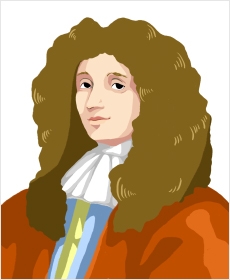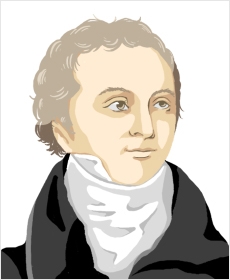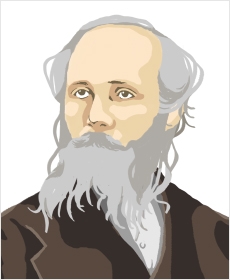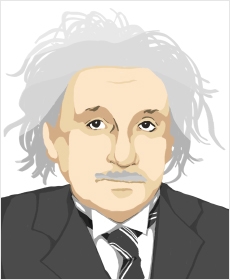 Home > Nature of light > History of research on light
Home > Nature of light > History of research on light
History of research on light

Many researchers through the ages have taken up the challenge of finding out “What is Light?”
Optics is known as the oldest discipline along with mechanics.
The progress of the study of light has been made by the great scholars from different fields introduced here while leading other discipline and closely involved with the growth of industry and culture.
5th-3rd B.C.
“The essence of light is white light.
Colors are made up of a mixture
of lightness and darkness.”
Era of Ancient Greece (Aristotle)
The foundation for modern optics field was laid in ancient Greece in research carried out approximately 5th B.C. to 3rd B.C. The three great philosophers of ancient Greece or namely Socrates (469-399 B.C.), Plato (427-347 B.C.), and Aristotle (384-322 B.C.) established the foundations of the disciplines of astronomy, biology, mathematics, politics, and philosophy, etc.
Then Euclid (330-275 B.C.) summarized fundamental knowledge of optics, such as reflection, diffusion and vision, into a book called “Optics”.
These concepts on light established in the age of Ancient Greece rendered a large effect up until the appearance of Newton in the late 17th century.

10th-11th centuries
"Why does the moon appear larger near
the horizon than it does
when higher up in the sky ?"
(Mathematician, astronomer, physicist, doctor and philosopher from the Islamic world)
Born in the city of Basra in Iraq, Ibn al-Haytham was an active scholar in Basra and Cairo (Egypt). He made an intensive study of Grecian academics and left numerous writings to later generations. In the field of optics also, he left major historic works including the “Book of Optics” that covers experiments and observation on light reflection and refraction through the use of lenses and mirrors. He also authored treatises on reflection from concave mirrors, refraction from glass spheres, visual perception, light from the moon and stars, and the structure of space. His usage of precise theory through the application of mathematical methods and the experimental method served as the driving force for modern science.

17th-18th centuries
“Light is comprised of colored particles.”
(English physicist, mathematician, and astronomer.)
Newton is credited with three major discoveries one of which was carrying out “Optical research into the spectral decomposition of light.” (The others are “universal gravitation” and “infinitesimal calculus.”) He greatly contributed to the development of the science of optics by collecting technology on lenses, prisms, mirrors, telescopes, microscopes and optical (mirror/lens) polishing. In 1668, he fabricated a reflecting telescope having no chromatic aberrations. In a paper presented in 1672, he announced his “New Theory on Light and Color” in which he proclaimed that “light is a mixture of various colors having different refractivity” rather than “the pure white (sunlight)” proposed by Aristotle, and demonstrated his theory in the famous prism experiment. In 1704, he authored the book “Opticks” where he reveals his “Light Particle Theory.”

“Light is a wave.”
(Dutch mathematician, physicist, and astronomer)
Christiaan Huygens was born in Hague in Netherlands. His father was a diplomat and politician.
As an astronomer, he discovered Saturn’s satellite Titan, the Saturn’s ring, and the Great Nebula of Orion with a self-fabricated telescope of magnification of 50x. In 1690, he published a paper on light advocating his theory that light is a wave or wavefront. He utilized this theory of light as a wave to explain light reflection and refraction phenomenon. After repeated stormy debates opposing Newton’s light particle theory, Huygens' theory that light is a wave became the mainstream scientific concept.

18th-19th centuries
“Proof of the wave theory of light”
(English physicist, classical scholar, and archeologist)
The accomplishments of Young extend to many fields including deciphering text from ancient Egypt, the theory on blood circulation, proposing the second pendulum, introducing Young’s modulus into elasticity, and a multitude of others. In a shift of research from vision (trichromatic color vision and eye adjustment mechanism) to optics, in 1807 he showed that when light coming from a point light source is shined onto two pinholes, interference fringes can be observed on a screen an appropriate distance away (Young’s Experiment) and advocated his theory that light behaves like a wave. In the field of elastic body mechanics, his name still remains as the fundamental constant Young’s Modulus, amongst other achievements he was first to use the term energy and introduced that concept.

“Predicted the existence
of electromagnetic waves”
(Scottish theoretical physicist)
This scholar established the field of classical electrodynamics based on the famous Maxwell’s Equations in 1864 that became the foundation for modern electromagnetism. The following four equations known as Maxwell’s Equations have been called the “Jewel of Physics.”
He also theoretically predicted the existence of electromagnetic waves, the fact that electromagnetic waves propagate at the same speed as light, and as horizontal waves. He is further well known for his research on the composition of Saturn’s rings and the Kinetic theory of gases (Maxwell-Boltzmann distribution).

20th century
“Light is a photon”
(German-born theoretical physicist)
Einstein is called the greatest physicist of the 20th century because of three groundbreaking research results announced in 1905 that had a great impact on physics. Those three papers were on the photoelectric effect theory where light is made up of particles called photons, the theory of Brownian motion utilizing kinetic theory of molecules, and the theory of special relativity. The theory of relativity in particular was a new discovery about space and time expressed in the relativity principle of electromagnetism and which resolved the ether problem in 19th century physics. Einstein is famous for his research on the theory of relativity yet his work on theoretically revealing the photoelectric effect based on the light quantum hypothesis won him the Nobel Prize in physics in 1921.

Through the researches accumulated over 2,000 years of time, the true nature of light or namely the photon was discovered. The photon has many mysterious physical properties such as possessing the dual properties of a wave and a particle. Revealing facts of these properties may lead us to using light more effectively than ever before.
The photon is a substance that is seen as the key to the origins of space and life. For human beings, history of light and optics research may have only just begun.

Mr. TOYODA

Mr. OHTAKE






